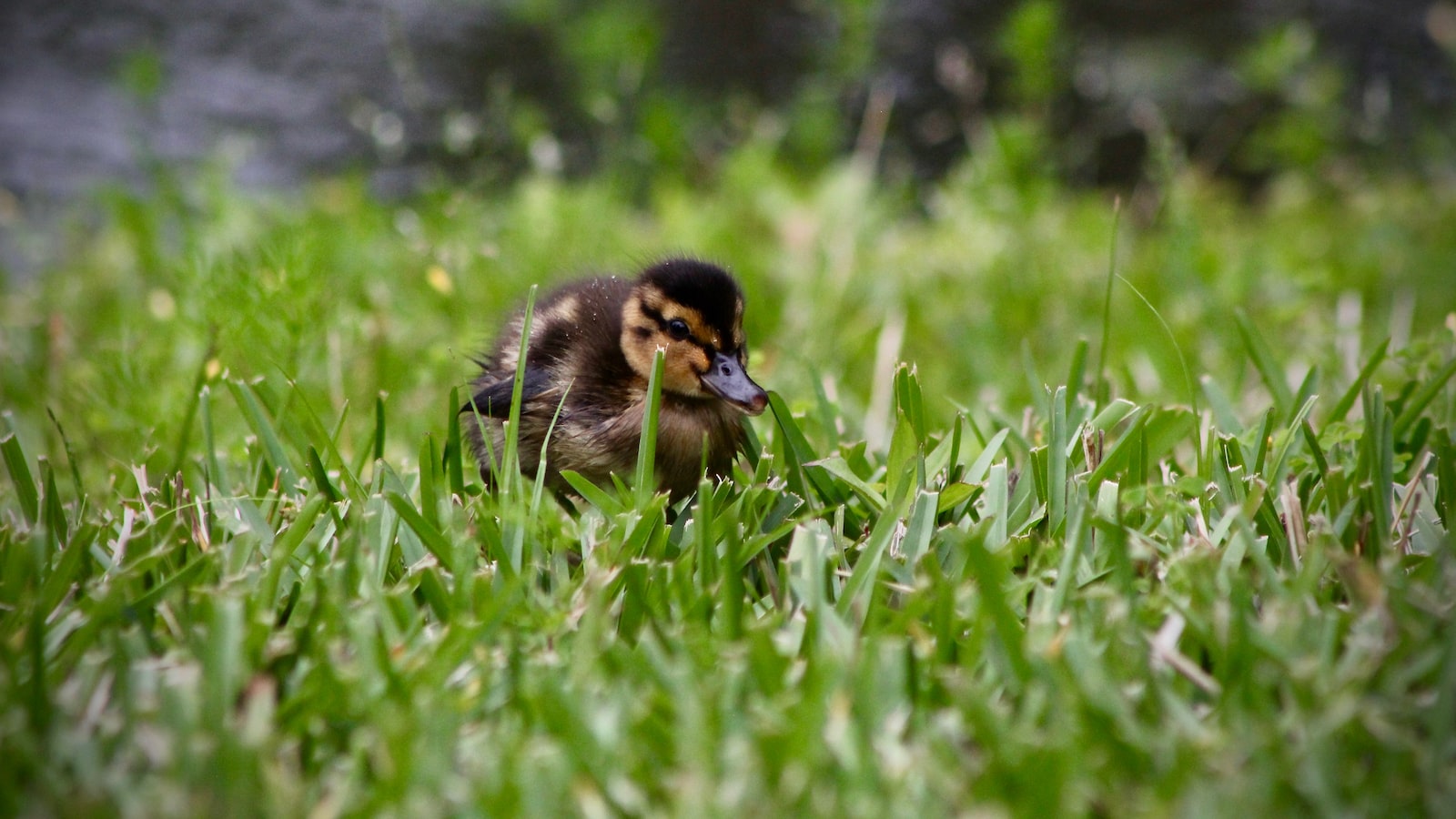Lush green blades gently sway in the breeze, inviting bare feet to dance upon their velvety embrace. Ah, the beauty of a well-tended lawn. Yet, for the green-thumb enthusiasts craving a change of scenery, the thought of transplanting grass can bring both excitement and trepidation. Fear not, dear readers, for we shall embark on a horticultural adventure together. In this article, we will unravel the secrets of transplanting grass, guiding you through the delicate process of uprooting your precious turf and fostering its new home. From selecting the ideal location to nurturing your transplanted greenery with tender care, allow us to demystify this garden artistry. So, roll up your sleeves and grab your gardening gloves, as we embark on an odyssey to transplant grass and cultivate beauty anew.
Preparing the Site for Transplanting Grass
One of the most crucial steps in successfully transplanting grass is properly preparing the site. Whether you’re revitalizing your lawn or starting from scratch, this step is paramount in ensuring the new grass takes root and thrives. To set the stage for a healthy growth, follow these essential guidelines:
-
Clear the area: Remove any existing grass, weeds, rocks, or debris from the site. This will provide a clean slate for the new grass to establish its roots without any competition or hindrances.
-
Loosen the soil: Use a garden fork or tiller to loosen the top layer of soil. This helps improve drainage, allows for better penetration of nutrients, and creates an ideal environment for the grass roots to spread. Aim for a depth of approximately six inches to ensure proper aeration.
-
Amend the soil: Test the pH level of the soil to determine its acidity or alkalinity. Grass typically thrives in slightly acidic soil, with a pH range of 6 to 7. If necessary, add organic matter or garden lime to adjust the pH level accordingly. Incorporating compost or other organic materials can also enhance soil fertility and promote a healthy growing environment.
In addition, consider the following features and tips for a successful grass transplanting venture:
| Feature/Tips | Description |
|---|---|
| Choose the right grass type | Select a species that suits your climate and intended use, whether it’s a cool-season or warm-season grass. Each type has specific requirements for sunlight, water, and maintenance. |
| Watering schedule | Establish a watering schedule to ensure the newly transplanted grass receives adequate moisture without overwatering. Provide frequent but short watering sessions to encourage root growth. |
| Mowing height | Set your mower at the appropriate height for the chosen grass variety. This helps maintain optimal growth and promotes a healthy and lush lawn. |
By following these guidelines and utilizing the suggested features and tips, you’ll be well on your way to creating a vibrant and thriving lawn. Remember, successful grass transplantation is all about providing the ideal conditions for the roots to take hold and flourish. With proper site preparation and ongoing care, you can enjoy a beautiful and resilient carpet of green in your outdoor space.

Choosing the Right Grass Variety for Transplantation
When it comes to transplanting grass, choosing the right variety is crucial for ensuring a successful transplantation process. Each grass variety has different characteristics and requirements, so it’s important to select one that suits your specific needs. Whether you’re looking for a grass variety that is drought resistant, shade tolerant, or quick to establish, this post will guide you through the process of choosing the perfect variety for your new lawn.
Firstly, consider the climate and growing conditions in your area. Different grass varieties thrive in different climates, so it’s important to select one that is well-suited to your region. For example, if you live in an area with hot summers and mild winters, warm-season grasses like Bermuda or Zoysia might be the best choice. On the other hand, if you live in a region with cold winters and moderate summers, cool-season grasses like Kentucky Bluegrass or Fescue could be more suitable.
| Features | Tips |
|---|---|
| Drought Resistance | Consider grass varieties that have excellent drought tolerance to minimize water requirements. |
| Shade Tolerance | If your lawn receives limited sunlight, opt for shade-tolerant grass varieties like Fine Fescue or St. Augustine. |
| Establishment Time | Some grass varieties establish quickly, while others require more time and care. Choose accordingly based on your patience and maintenance capabilities. |
Additionally, consider the specific features or characteristics you desire in your lawn. Do you want a grass variety that is highly drought-resistant and requires minimal watering? Or are you looking for a grass that can thrive in shady areas? By identifying your desired features, you can narrow down the options and choose the best variety for your transplantation project.
Remember, grass transplantation requires careful planning and preparation. By selecting the appropriate grass variety based on climate, growing conditions, and desired features, you can ensure that your new lawn thrives and adds beauty to your outdoor space.

Essential Steps for Successful Grass Transplantation
Transplanting grass can be a challenging task, but with the right steps, you can ensure a successful transplantation process. Here are some essential guidelines and tips to help you achieve a healthy and vibrant lawn:
1. Choosing the Right Time
Selecting the appropriate time for grass transplantation is crucial for its survival and growth. The best seasons for this process are typically spring or fall, when temperatures are milder.
2. Preparing the Soil
Before transplanting the grass, you need to prepare the soil properly. Begin by removing any weeds, rocks, or debris from the area. Loosen the soil using a rake or rototiller to ensure optimal root penetration. It’s also beneficial to add organic matter like compost to improve soil fertility.
| Feature | Description |
|---|---|
| Watering | Ensure consistent watering, keeping the soil moist but not saturated, to promote proper root development. |
| Fertilization | Apply a slow-release fertilizer to provide essential nutrients to the transplanted grass. |
| Mowing | Once the grass has established well, mow it regularly to encourage healthy growth and discourage weed competition. |
3. Transplanting Techniques
When transplanting grass, it’s advisable to use a sharp shovel or spade to cut small sections of existing grass, ensuring a good amount of soil and root structure is retained. While transplanting, be gentle to prevent damaging the roots. Proper spacing between each transplanted section is essential to avoid overcrowding and promote healthy growth.
4. Post-Transplant Care
After transplanting, water the grass thoroughly to settle the soil and remove any air pockets. Provide regular watering for the first few weeks, keeping a close eye on moisture levels. Additionally, apply a high-quality grass starter fertilizer to promote root development. Avoid traffic or heavy use of the newly transplanted area until the grass has fully established.

Maintaining Transplanted Grass for Optimal Growth
Once you have successfully transplanted your grass, it is crucial to provide the necessary care for optimal growth. Here are some essential tips and features to keep in mind:
-
Adequate Watering: Ensure that your transplanted grass receives enough water to establish its root system. Water deeply but infrequently, allowing the top few inches of soil to dry out between watering. This promotes deep root growth and helps the grass become more drought-tolerant.
-
Regular Mowing: Once the transplanted grass reaches a height of about 3 inches, it’s time to mow. Be sure to adjust your mower blade to the recommended height for your grass type. Regular mowing encourages healthy tillering and prevents the grass from becoming too tall and weak. Remember to never remove more than one-third of the grass blade in a single mowing session.
-
Fertilize Wisely: Apply a slow-release, balanced fertilizer to help the transplanted grass obtain the necessary nutrients. Follow the manufacturer’s instructions for proper application and avoid over-fertilization, as this can lead to the grass burning or excessive growth. Regular fertilization promotes lush, green growth and strengthens the grass against stressors such as foot traffic or extreme weather conditions.
In the table below, you will find additional features and tips for maintaining transplanted grass:
| Feature/Tips | Description |
|---|---|
| Weed Control | Regularly inspect and remove weeds to prevent competition with grass. |
| Soil Aeration | Loosen compacted soil to improve root growth and water penetration. |
| Overseeding | Fill in any thin areas by overseeding with the appropriate grass seed. |
A: While it may sound like a simple process, transplanting grass requires some careful preparation. Just plucking out a patch of grass and moving it elsewhere won’t guarantee successful transplantation.
Q: How can I ensure a lush and healthy lawn after transplanting grass?
A: To ensure a vibrant lawn after the transplant, start by choosing the right time of year to carry out the process. Additionally, prepare the new location thoroughly by removing any debris, loosening the soil, and providing adequate drainage. Watering and maintaining the appropriate height for your grass are equally important to support healthy growth.
Q: Are there any tricks for a smooth grass transplant, perhaps known only to the experts?
A: While experts have their tips and tricks, one widely recommended technique is to use a sharp spade or shovel to cut the grass clump into sections before transplantation. Each section should be small enough to handle easily but large enough to contain the necessary root system. This meticulous approach fosters better root establishment and prevents stress on the grass. As we conclude this green-thumbed adventure, you now possess the secrets to masterfully transplanting grass like a seasoned horticulturalist. Armed with the knowledge to revive dreary lawns or redesign verdant landscapes, there’s no limit to the wonders you can achieve.
Remember, each grass blade bears witness to your nurturing touch, whether it’s transforming a humble patch into an emerald oasis or whispering life into patches that have lost their luster. Let the rhythm of nature guide your gentle hands throughout this journey, and watch as the magic unfolds beneath your feet.
Like a conductor leading a symphony of chlorophyll, you hold the power to orchestrate a spectacle rivaling the most enchanting gardens. As you sculpt lush carpets of green, envision your turf as your canvas, each step meticulously sculpting a masterpiece.
But tread lightly, dear reader, for new beginnings come with great responsibility. As you transplant grass, bear in mind the delicate balance of nature that harmonizes beneath the surface. Nurture your transplanted saplings with love and tenderness, ensuring their roots take hold and thrive in their newfound home.
As you gaze upon the fruits of your labor, relish in the harmony of colors and textures that unfold before your eyes. Each strand of grass, every tiny leaf, weaves together a tapestry of vibrancy, transforming mere earth into a sanctuary where nature can flourish.
Remember, this process is not merely about transferring life from one place to another. It’s about becoming a custodian of nature’s beauty, cherishing its delicate intricacies, and nurturing its growth. Let your new knowledge guide you on an evergreen journey where landscapes luxuriate under your care.
Now, armed with newfound expertise, go forth and transform the world around you, one blade of grass at a time. Embrace the art of transplantation, and let your imagination paint landscapes that captivate hearts and minds alike. The stage is set, the green thumb is yours – let the spectacle begin!
- When to Put Weed and Feed on Lawn in Michigan - October 16, 2023
- When to Fertilize Potatoes Plants - October 16, 2023
- Can You Plant Clover in the Spring - October 16, 2023
Contents
- 1 Preparing the Site for Transplanting Grass
- 2 Choosing the Right Grass Variety for Transplantation
- 3 Essential Steps for Successful Grass Transplantation
- 4 1. Choosing the Right Time
- 5 2. Preparing the Soil
- 6 3. Transplanting Techniques
- 7 4. Post-Transplant Care
- 8 Maintaining Transplanted Grass for Optimal Growth

